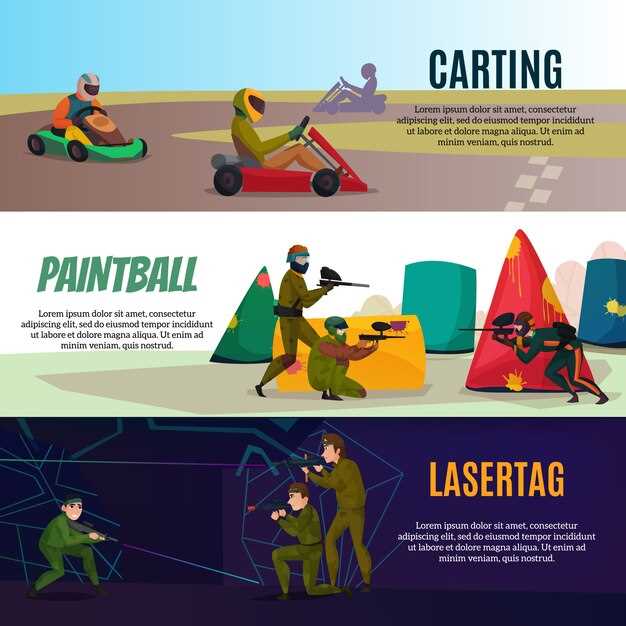
When venturing into the rugged terrain with a Utility Task Vehicle (UTV), safety must be your top priority. Off-road adventures can be exhilarating, offering an opportunity to explore nature and tackle challenging landscapes. However, the potential for accidents increases significantly if proper safety measures are not taken. Understanding and implementing safety tips can help ensure a safe and enjoyable experience.
Before hitting the trails, it’s essential to equip yourself with knowledge about your UTV and the environment. Familiarizing yourself with the vehicle’s specifications, capabilities, and limitations can provide critical insights that enhance safety. Each UTV operates differently, and understanding how to handle your specific model will prepare you for unforeseen circumstances that may arise during your adventure.
Proper preparation extends beyond vehicle knowledge. Wearing appropriate safety gear is crucial to protect yourself from potential injuries. Helmets, goggles, gloves, and sturdy footwear are vital components that can significantly reduce the risk of harm. It is also wise to carry essential safety accessories, such as a first aid kit, fire extinguisher, and emergency communication devices, to address any unexpected situations effectively.
In addition to personal safety, being aware of your surroundings and the terrain is critical. Adhering to established trails and regulations protects both you and the natural environment. Staying on designated routes not only minimizes damage to wildlife and plant life but also decreases the likelihood of getting lost or performing risky maneuvers that could lead to accidents. Always remain vigilant and prepared for changing weather conditions, as they can greatly affect trail conditions and vehicle performance.
Choosing the Right Safety Gear for Your UTV

When embarking on off-road adventures in a UTV, selecting the appropriate safety gear is crucial for ensuring both your safety and the safety of your passengers. First and foremost, a high-quality helmet is essential. Look for models that meet safety certification standards such as DOT or Snell, providing adequate protection against head injuries.
In addition to a helmet, consider wearing goggles or a visor to protect your eyes from dust, debris, and UV rays. Ensuring clear visibility is vital, especially in rugged terrains where obstacles can appear unexpectedly.
Protective clothing also plays a significant role in safety. Opt for durable, abrasion-resistant clothing, such as off-road jackets and pants, which shield you from cuts and scrapes. Look for gear made from breathable materials to enhance comfort during long rides.
Footwear is another critical aspect; choose sturdy boots with good ankle support and a non-slip sole to provide stability while operating the UTV. This type of footwear not only protects your feet but also enhances your control over the vehicle.
Additionally, don’t overlook the importance of gloves. Wearing gloves with a good grip can help you maintain control over the steering wheel and protect your hands from harsh elements and abrasion.
Finally, it’s advisable to equip your UTV with seat belts and roll cages if not already installed. These safety features are fundamental in minimizing injuries during a rollover or sudden stops.
Choosing the right safety gear can significantly enhance your off-road experience, providing confidence and protection throughout your adventure.
Understanding UTV Load Limits and Weight Distribution
Understanding the load limits and weight distribution of your Utility Task Vehicle (UTV) is crucial for a safe off-road experience. Each UTV model has a manufacturer-specified load limit, which includes the weight of passengers, cargo, and any accessories. Exceeding these limits can lead to poor handling, increased stopping distances, and an elevated risk of rollover accidents.
To determine the load limit, refer to the owner’s manual or the manufacturer’s label typically found on the vehicle. This limit is often stated in pounds or kilograms and takes into account the maximum safe weight the UTV can carry while maintaining stability and steering control.
Weight distribution is equally important. An uneven distribution can negatively impact handling and performance. Ideally, the weight should be evenly spread across the UTV to ensure stability, especially when navigating difficult terrain. Avoid heavy loads on one side or excessive rear loading, which can result in a loss of traction at the front wheels, leading to steering difficulties.
When loading a UTV, place heavier items lower and towards the center of the vehicle. Secure all cargo to prevent movement during transit. It’s advisable to keep the load as low as possible to maintain a lower center of gravity, thus enhancing stability and reducing the risk of tipping over.
Regularly check the condition and fit of the cargo straps or nets to ensure they adequately secure your load. If you’re planning a trip that requires carrying additional equipment or supplies, consider investing in accessories such as cargo boxes or racks designed for your specific UTV model, which can help organize and distribute weight more effectively.
Understanding and adhering to load limits and weight distribution guidelines will enhance your safety and improve the overall off-road experience. Proper management of these factors can prevent accidents and ensure that your UTV performs optimally on diverse terrains.
Navigating Terrain: Tips for Safe Off-Road Driving
Off-road driving presents unique challenges due to varying terrains. Understanding these challenges is crucial for ensuring safety while enjoying your adventure. Here are essential tips for navigating different types of terrain safely.
| Terrain Type | Tips |
|---|---|
| Rocky Terrain |
|
| Muddy Trails |
|
| Sand Dunes |
|
| Hilly Areas |
|
| Water Crossings |
|
In addition to specific terrain tips, always wear your seatbelt, ensure your UTV is in good working condition, and carry a first-aid kit. Preparation is key for a safe and enjoyable off-road experience.
Pre-Trip Vehicle Inspections: What to Check Before You Go
Prior to embarking on any off-road adventure, conducting a thorough vehicle inspection is crucial for ensuring safety and performance. Below are key components to check before hitting the trails.
1. Tires: Examine all tires for proper inflation, tread depth, and signs of wear or damage. Ensure you have adequate traction for off-road conditions and confirm that your spare tire is also in good condition.
2. Fluids: Check essential fluids, including engine oil, coolant, brake fluid, and transmission fluid. Ensure that all levels are within the manufacturer’s recommendations to prevent overheating or mechanical failure.
3. Brakes: Test the brakes for responsiveness. Inspect brake pads, rotors, and lines for any signs of wear or leaks. Effective braking is vital, especially in rough terrain.
4. Battery: Inspect battery connections for corrosion and ensure that the battery is securely mounted. A reliable battery is essential for starting your UTV and powering electrical systems.
5. Lights: Verify that all lights, including headlights, taillights, and turn signals, are functioning properly. Proper visibility is important for safety during both day and night excursions.
6. Belts and Hoses: Examine belts for cracks or fraying and hoses for leaks or wear. Damaged belts and hoses can lead to engine problems during your trip.
7. Suspension: Inspect the suspension system for any issues, such as worn shocks or struts. A well-functioning suspension is necessary for handling rough terrains and absorbs impacts effectively.
8. Safety Equipment: Ensure that you have all necessary safety gear, including first aid kits, fire extinguishers, helmets, and seat belts. Check that all equipment is in good working order.
9. Storage and Tools: Organize tools and emergency supplies in your UTV. Make sure you have recovery gear such as tow straps and winches, as well as a tool kit for minor repairs on the trail.
By performing these checks, you mitigate risks and enhance the overall experience of your off-road adventures. Proper preparation ensures both safety and enjoyment while exploring new terrains.
How to Plan Your Route for Maximum Safety
Planning a safe route for your off-road adventure involves several key steps to ensure that you avoid hazards and enjoy your trip. Follow these guidelines to maximize safety during your journey.
- Research Your Destination:
- Check maps and local guides for information on terrain.
- Look for any recent changes in trail conditions or closures.
- Evaluate Your Vehicle:
- Ensure your UTV is suitable for the trails you plan to explore.
- Inspect tires, brakes, and suspension before departure.
- Know Your Skill Level:
- Choose routes that match your experience and comfort with off-road conditions.
- Avoid excessively challenging trails if you are a beginner.
- Use GPS and Navigation Tools:
- Utilize GPS devices specifically designed for off-road navigation.
- Download offline maps in case of poor signal areas.
- Inform Others:
- Share your planned route and expected return time with someone outside your group.
- Consider carrying a two-way radio to stay in touch with your group.
- Consider Weather Conditions:
- Check the weather forecast before heading out and prepare for changes.
- Avoid routes that may become hazardous due to rain, snow, or extreme temperatures.
- Identify Emergency Exits:
- Know the location of emergency exits along your route.
- Be aware of the nearest help points in case of vehicle failure or an accident.
By following these steps, you will significantly reduce risks and enhance your overall safety while enjoying your off-road adventure.
Emergency Preparedness: Essential Kits for Off-Roading
When venturing into the wilderness with your UTV, being prepared for emergencies is crucial. A well-thought-out emergency kit can mean the difference between safety and danger during off-road adventures. Below are essential components that should be included in your off-roading emergency preparedness kit.
1. First Aid Kit
A comprehensive first aid kit is vital for treating minor injuries and stabilizing more serious conditions. Ensure it includes adhesive bandages, antiseptic wipes, gauze pads, adhesive tape, and tools like scissors and tweezers. Familiarize yourself with basic first aid procedures to maximize its effectiveness.
2. Communication Devices
In remote areas, cell phone coverage may be inadequate. Consider carrying a two-way radio or a satellite phone for emergency communication. These devices can help you reach out for assistance when needed, ensuring someone knows your location.
3. Emergency Food and Water Supplies
Pack non-perishable food items and water that can sustain you for at least 72 hours. Energy bars, dried fruit, and jerky are excellent choices. Additionally, include a portable water filtration system or purification tablets to ensure you have access to safe drinking water.
4. Basic Tools and Equipment
Having the right tools can help you make necessary repairs to your UTV. Include a multi-tool, wrenches, pliers, duct tape, and jumper cables. A tire repair kit and a portable air compressor are also incredibly useful in case of flat tires.
5. Firestarter Kit
Being able to start a fire can provide warmth, cook food, and signal for help. Include waterproof matches, a lighter, and fire starter sticks in your kit. Familiarize yourself with fire-starting techniques to ensure you can ignite a fire even in challenging conditions.
6. Emergency Blankets and Shelter
Keep emergency thermal blankets or sleeping bags to help retain body heat in cold weather. A lightweight tarp or emergency bivvy can provide shelter and protect you from the elements if you get stranded.
7. Navigation Tools
A map of the area and a compass are essential navigation tools if GPS fails. Make sure you are familiar with the terrain and have the means to navigate your way back to safety.
8. Personal Safety Items
Include a whistle, a reflective vest, and headlamp or flashlight with extra batteries. These items can make you more visible to rescuers and help you signal for assistance in dark conditions.
In conclusion, preparing a comprehensive emergency kit tailored for off-roading can enhance your safety significantly. Regularly check and update your kit to ensure all items are functional and adequately stocked. Being prepared allows you to enjoy your adventure while minimizing risks.

